This article explains the procedure for preparing a worksheet for the following types of business: Service rendering concerns are businesses that earn revenue from rendering services. The worksheet procedure for a service rendering concern is explained using the following example. Assuming that the books are closed monthly, prepare a worksheet for John Dry Cleaning Services from the following trial balances and adjustments on 30 April 2017: The adjustments are as follows: Trading concerns are businesses that deal in selling and buying merchandise. In trading concerns, merchandise is purchased from the wholesale market or direct from the producer. Merchandise is sold in the retail market at comparatively higher prices. Trading concerns derive a major part of their income from buying and selling merchandise rather than from rendering services. From the trial balance and adjustments shown below, prepare a worksheet. Adjustments are as follows:
Preparation of Worksheet for Service Rendering Concerns
Example
Solution
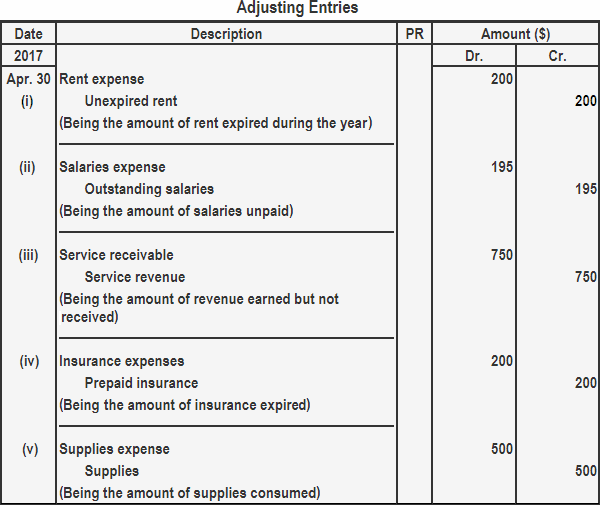
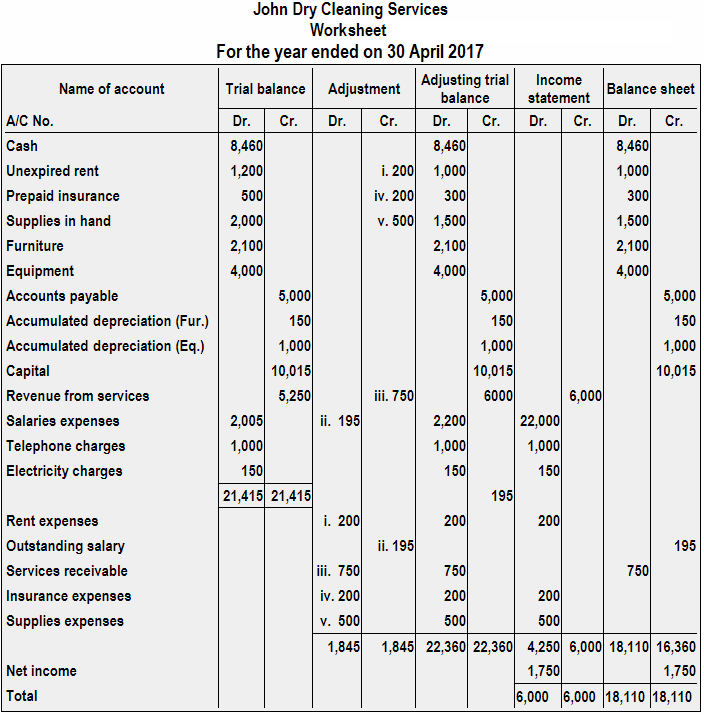
Preparation of Worksheet for Trading Concerns
Example
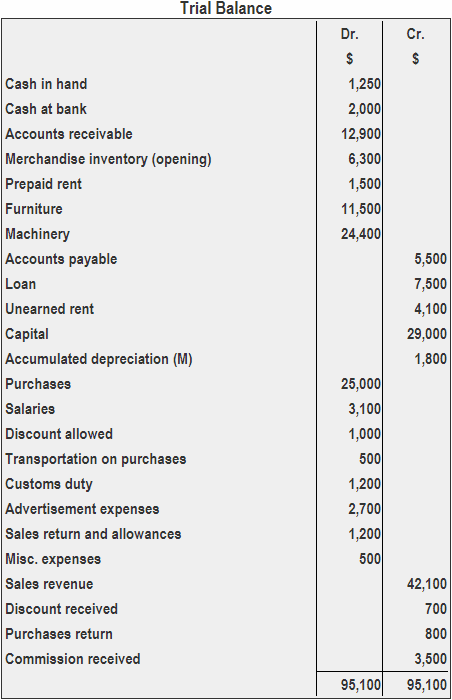
Solution
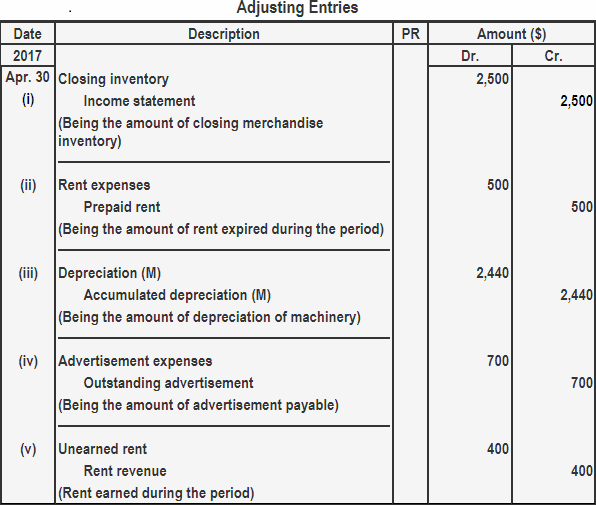
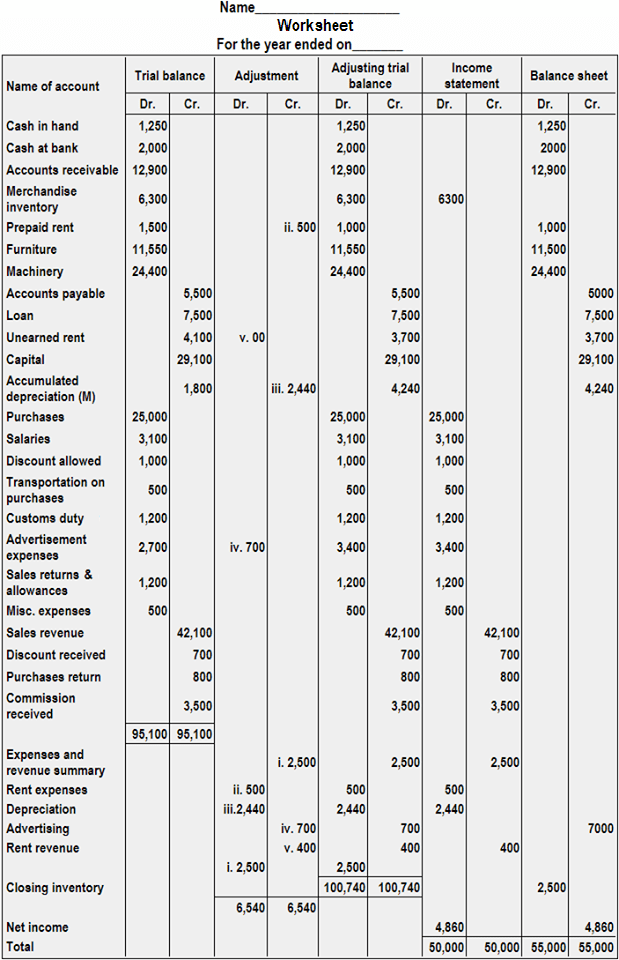
Preparation of Worksheet FAQs
Trading concerns are businesses that deal in selling and buying merchandise. In trading concerns, merchandise is purchased from the wholesale market or direct from the producer. Merchandise is sold in the retail market at comparatively higher prices. Trading concerns derive a major part of their income from buying and selling merchandise rather than from rendering services.
Trading concerns are the only type of business that buy and sell merchandise. Service rendering concerns involve rendering services for a fee. They do not buy or sell goods at wholesale or retail prices.
For starting a trading concern, apart from the internal factors there are external factors that are required for starting a trading concern. One of the external factors is having capital to start with. This implies that one has the financial capacity to purchase inventory. Another important factor is selling space or location for retailing merchandise. Factoring all these, one should be able to decide whether there's enough demand for the goods that will be bought and sold.
There are opportunities to make profit in trading concerns, since they purchase goods for resale at higher prices. Since there is also the possibility of making profit from volume sales, markets with high volume transactions can be explored by traders. One other advantage is that trading concerns are also in a position to sell goods on consignment basis. This kind of selling helps the business owner evade the risk of over purchasing or holding inventory, which is often perishable.
One disadvantage is that profits cannot be made without incurring losses. The trading business involves risk of overstocking or under stocking, which leads to wastage or loss in value respectively. Therefore, there's no guarantee that goods purchased will always be sold at profit since this depends on the buying and selling prices. Another disadvantage is that the business requires large capital inputs for purchase of inventory, Fixed Assets like building or machinery and Working Capital like cash or stocks.
True Tamplin is a published author, public speaker, CEO of UpDigital, and founder of Finance Strategists.
True is a Certified Educator in Personal Finance (CEPF®), author of The Handy Financial Ratios Guide, a member of the Society for Advancing Business Editing and Writing, contributes to his financial education site, Finance Strategists, and has spoken to various financial communities such as the CFA Institute, as well as university students like his Alma mater, Biola University, where he received a bachelor of science in business and data analytics.
To learn more about True, visit his personal website or view his author profiles on Amazon, Nasdaq and Forbes.











